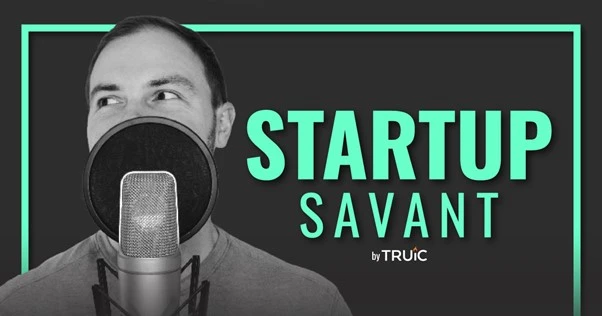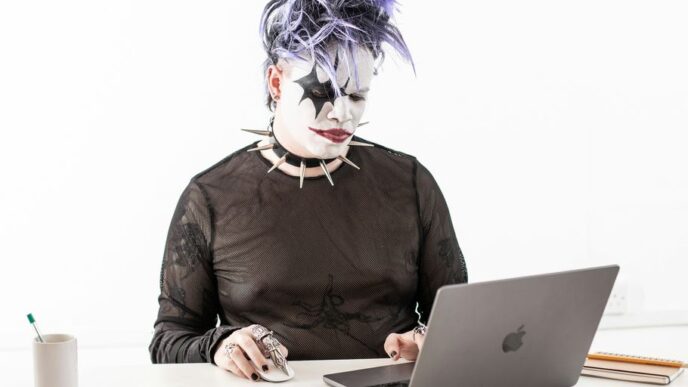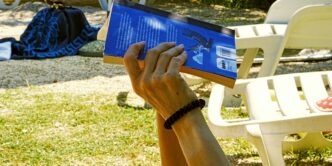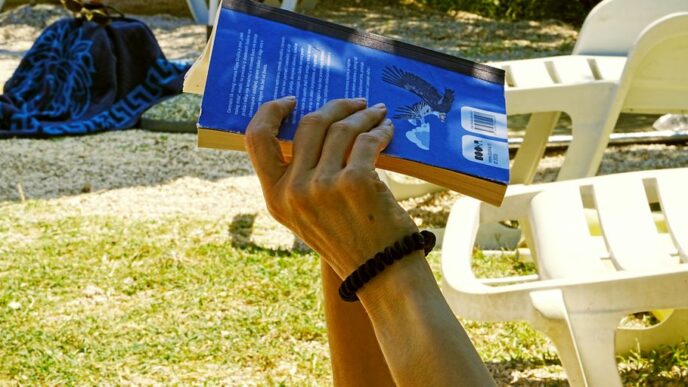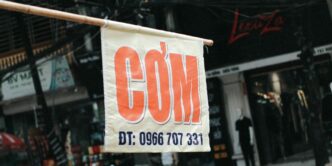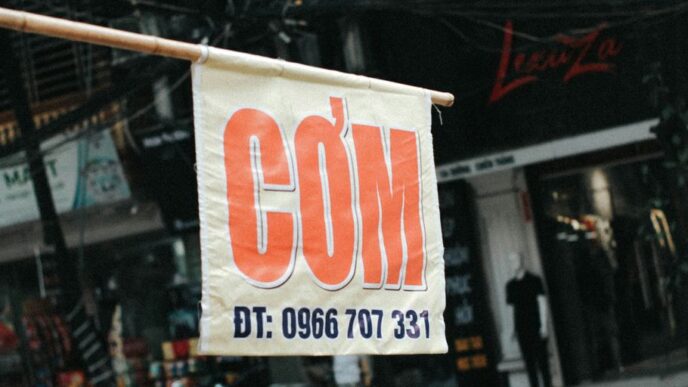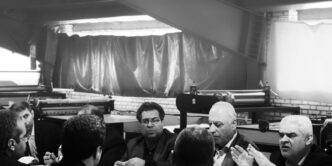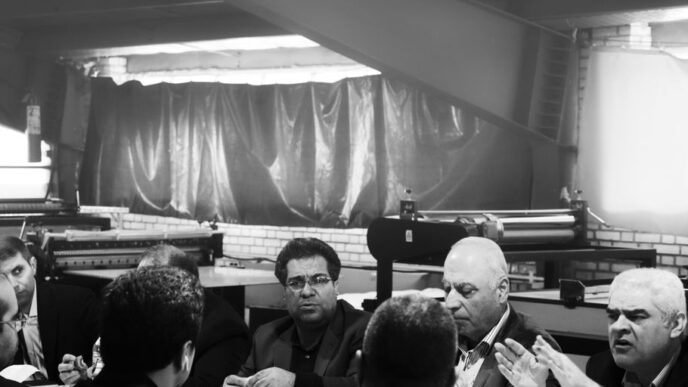This episode of Startup Savant features Parker Graham, the founder of Finotta. He talks with podcast host Ethan about how his company is helping banks to turn their mobile apps and websites into true “digital branches” that offer many of the same personalized services as their physical branches.
What is Finotta?
“Finotta is a banking technology company. We’re really here to finish what other technology companies have stopped at, [which is] really bringing personalization into banking for the first time. For instance, you go on Instagram or TikTok at this point and, basically, its whole entire goal is to just feed you content that you just really want to consume.
For the first time ever, we’ve really brought that same methodology into banking of all places, where a bank’s mobile app with our technology can actually bring you products and services that, weirdly enough, you need at certain points in your financial journey that you might be on. Maybe you’re trying to pay off debt or build wealth and really not know how to actually do those things efficiently. Our technology helps a bank actually tell you exactly what to do in those instances.”
So is this an app that the users of that bank use, or is this something that’s on the back end of the bank? What does this product actually look like?
“So it’s actually an embedded platform. So we’re embedded into what we call the digital channel of the bank, so the mobile app and the online, basically the online experience. Really, it functions as a button. It’s basically a button that sits on the home screen of the bank’s app.
Then once the user clicks on that button, our experience gets jettisoned and brought into view. It’s white labeled so the user doesn’t really see a difference or a change, but ultimately, it does a lot of radically different stuff than what somebody’s used to in a banking application.”
When you say radically different, what radical difference are we talking about here?
“I’m guessing probably the four things you use your bank’s app and you never ever think about it ever again are probably just checking your account balances, looking for fraudulent transactions, maybe taking a snapshot of a check, and that’s pretty much where all 10,500 financial institutions’ banking apps really stop.
[By contrast], think of Finotta like a coach. Once you click our button and you get into our experience, it actively tells you exactly what you should be doing with your money based on your financial lifestyle and the financial journey that you’re on … We’re finding product gaps and services that you might need from the bank or maybe even a third party really right now being the biggest one that everybody talks about is student loans, right? Student loans are a huge problem, and we’re an easy way for a bank to provide you a student loan refi and also help monetize the bank in a new radical way.
So the experience has a badge system, a financial health leveling system, and it’s a lot of fun. When you pair banking with fun, that just never really happens. So we’re trying to make that difference in the world right now.”
So it sounds like the bank is actually your customer, but your end user is the end user of the bank.
“Exactly. Our customer’s customer.”
What’s the main problem that Finotta is out there trying to solve?
“Right now, banks have done an incredible job. I mean, I’m sure we all have a memory of a banker or a bank scenario where you’ve got some nostalgia baked in. Maybe it’s the bank that you grew up next to, the one down the street. For me, it’s SMB in Southwest Missouri … I remember opening up my first accounts there, and, really, that’s where the experience for me stopped. I’m in that millennial grouping, where I do everything digitally, and Gen Zers, the group below me, they’re even more digitally native than I even am.
What’s been really difficult for banks and credit unions, for that matter, is making that transition from the physical branch customer relationship to the digital branch customer relationship. So we really look at the phone, the mobile app specifically as the digital branch for the bank. Our goal as a company is to really help them figure out how to personalize solutions and services for users, for customers in that digital branch just as well as they are doing in the personal relationships they build in the actual physical branch. So that’s both the problem set and the solution, how we look at solving. It’s really helping them bridge that gap from a technology perspective.
Banking is a commodity. It’s something that we just are all used to, and you really can get the same … service from any different branch. Throw a rock in your town that you’re currently standing in, you’ll hit a bank, more than likely, but the crazy thing is that they don’t differentiate themselves ever on products. They differentiate themselves on customer experience, customer service, taking care of people. They give you a good feeling when you walk into a branch or deal with them on the phone.
The problem is that there’s this whole new group [that only banks] digitally. They only bank on the phone, whether that’s through a mobile app or actually just physically calling somebody at the branch.
What’s been fascinating to us is that banks are really starting to see, and credit unions, they’re really starting to see that now, and they’re starting to put money into technologies that will make the experience better digitally. So we’re on the tip of the spear, if you will, on really helping them kind of bridge that gap … If you’re going to compete digitally, you have to spend money, and we’re one of the beneficiaries of those dollars spent.”
Your first company was Destiny, and your current company is Finotta. Tell us the story of the switch from Destiny to Finotta.
“Destiny really is the culmination of what I call my Ph.D. in entrepreneurship if you will. I did everything wrong that you could possibly pick to do wrong. That was that company’s life cycle, which is pretty fascinating, but basically, I got my entrepreneurial itch as a wealth advisor. Got done playing football. I went and became a high-net-worth wealth advisor. I was really successful in that job but just felt a calling to do something greater. I grew up really poor. So being a guy who wore a suit and tie every day and carried a briefcase, I felt like that was going to make me feel really important.
When I got to that point as a 20, I think I was 24, and I was like, ‘Oh, wow, this is not what I signed up for. I’m making wealthy people wealthier.’ I really feel this calling to take what I’ve learned here and create a technology to help the masses and really increase what I call my impact radius as a wealth advisory one-to-one. So taking that technology we were using for some of the wealthy people that we had and applying it to everyone else, the everyday consumer, was something I got really excited about.
So I actually spent a year just trying to figure out what I wanted to do, and I came up with this idea for a debt robo advisor. Basically, what Acorns and Betterment and Wealthfront, a lot of those investment robo advisors, what they were doing for wealth, I was like, ‘Well, shoot. We’ve got all this problem with debt in this country. It’s like what everybody talks about. Why don’t I try to do something to flip that on its head and create a debt robo advisor?’
So that’s what Destiny actually was. We launched in 2018. I raised $50,000 from my friend’s dads, who were all on pension plans and stuff, and just still feel very, very blessed to have had them back me. I had an accelerator with another $50,000 [that] backed me here out of Kansas City, which is actually why I moved to Kansas City.
What was the accelerator?
“It was … an accelerator that was around for only two years, but it was called the Found City FinTech Accelerator. It was actually based out of KC with a bank called NBKC, which is one of the biggest mortgage banking institutions in the country. They’re massive. That was what got me started. It’s just funny. Quickly, we realized that we did not know what we were doing at all. I mean, I had read all these books about entrepreneurship and was like, ‘Oh, yeah, I’ll figure it out. It’ll be fine,’ and quickly realized that, ‘Oh, wait. Bills cost money.’ I went from a high-paying job to a no-paying job.
So we quickly realized we couldn’t pay ourselves anything. It basically started this journey of just learning really how I worked as a founder and the type of people that I needed around me. I had two co-founders at the time and one of which I had known for 20 years. I knew him since we were kids. Unfortunately, we found out over two years that we really didn’t work well together. It took two years for us to finally come to a head. It was just incredible timing. We had this business for two years.
All three of us had stepped away to work full-time elsewhere to pay for bills. I went and worked at a liquor store, as I mentioned. I went and worked as a banker, as a consultant to basically figure out, ‘Okay. We have this technology. We thought maybe we would want to pivot into banking itself.’ So I was like, ‘Where else better to go than directly to the source?’
At the end of 2020, so this pandemic’s roaring [and] we had about $30,000 left in our bank account. If we just kept doing what we were doing, we could eek that by for eight months or something because we were barely spending any money on the tech itself. We had really figured out, ‘Okay. We need to pivot into banking.’ We had started talking to bankers. I luckily had a huge network of bankers from my previous job as a wealth advisor. We really figured out, ‘Okay. We could take our technology, [which] was Destiny at the time, and reconfigure it and elaborate on it and create this really cool platform that banking customers could use in a very similar way.’
If you can think about our tech, it was going to take something that was about as big as a dime and turn it into a dollar bill. That was how drastically much more code we needed. My two co-founders are both, luckily, software engineers, so I never had to pay really anything for software development. Basically, it came to a head where I was like, ‘Guys, listen, we need two things right now. We need customers and/or we need investors, and we have $30,000 left in the bank. I don’t want to just eek by and die a slow death. I would much rather take that money and try to go get either of those two things, and I’m the only one that can really do both.’
So I went ahead and made that decision. I quit that consulting job. I went directly into full-time at Destiny. We were thinking about changing the name. We were thinking about all these different things. Within a couple of weeks … I had actually closed $150,000 in investment.”
Where did that $150,000 come from?
“There was an investor conference that was digital … Basically, you did a speed dating thing with investors based on all the traction that we had and the vision for the company that we wanted to build, and how much money we needed, I met all those investors there, and that’s what we closed at the end of it. So I think I had done that two weeks prior, and then that second week closed that money. And then we got a customer too, which was great.
What was crazy was I got on our daily standup call and [told] the two co-founders, ‘Hey, guys, we not only got the investment done, but we got a customer too.’ There just were crickets on the end of the line … The co-founder that I was very, very close to called me and said he wanted to go get lunch … Basically, he had seen what it was going to take to actually build the tech of the platform that we were going to need, and he didn’t feel like he wanted to do that anymore, which was a huge blessing in disguise. I was very upset about it, but [in] hindsight, looking back, that’s exactly what we needed to happen. He left the company. The other co-founder left the company at that time. They were a package deal. So I was left by myself with money and a customer and no tech team and a product that wasn’t even close to being … commercially viable.”
Were they your tech team before they left?
“Yeah. They were the guys that built everything from scratch. So they had been that key component for us.”
So you’ve got this $150,000 new investment. You’ve got this new customer. Your two co-founders who built the thing are now gone. What did you do?
“I’ll be honest with you. I was mad for a little bit, a couple of days, and I basically had this epiphany of, ‘Man, I have a second chance here. I’ve got a second chance to redo this startup and really give it a good shot this time around.’
So I had to recreate really everything, the brand, the colors, the logo, the name, and most importantly, I had to recreate the culture. I had seen myself work with those two co-founders and seen myself get very angry and upset. I think you can be a certain way with somebody that really deeply because you have an expectation of them, they have an expectation of you, and you have so much history, but when you’re trying to hire a person that you don’t know, you don’t know anything about them, and you don’t really know who they are as a person.
So I knew I had to craft and create this vision of not only the company that I wanted to create but also the company that I wanted other people to be inspired to go work at if that makes sense. Really, 1,000% of my journey at that moment was also me really handing my business over in a spiritual way to God. I’m a Christian, and so a massive part of my story is being less, ‘Oh, I know exactly what I need to do,’ and being much more of a follower in what I feel like I’m guided to do, what I feel like I’m being pushed into do.
So I actually sat down and basically thought, ‘Okay. God, what type of company do I need to be in to be the most successful person as a leader that I can be and also inspire the best people that come work for me and with me?’ Four pillars really just flew out of my hand, and they actually ended up being the four pillars that we started with at what ended up becoming Finotta.
That was lead with love — love for yourself, love for the mission, love for the team, and then eventually, love for the customer. You can’t have the end without having the beginning. The second one was radical transparency. I definitely realized that with working with engineers that there’s a lot of ambiguity unless you start upfront with not having any.
Also, working with banks, I just wanted to be open, honest, and transparent with everything that we do from top to bottom. That includes with customers, that includes with people. I wanted people that also wanted that for themselves as well. I feel like there’s a lot of tension in organizations when you can’t be honest. So having that as a pillar was a massive one.
The third one is unapologetic accountability, which basically means everybody’s an adult here. We don’t need to watch over you, and you also shouldn’t need us to watch over you. It also has this row-the-boat mentality, where when you join our company, we’re heading towards the North Star, and that is improving financial lives for 10 million or, excuse me, for 100 million people. I don’t know if you’ve ever been in a boat with multiple people, but if everybody’s rowing in the same direction, you can get there really efficiently, but if one person is off on beat or pattern or distance or waypoint, one little inch at the starting point can be a mile at the ending point, right? So we really wanted that to be a huge part of it.
Then the fourth one was good times and good vibes. What we’re doing is changing the world in banking, and it’s extremely freaking difficult, extremely difficult, for a multitude of reasons. So because of that, we have to laugh loud, hard, and often. Those were the four that came to me, and I literally just wrote them on a piece of paper and started telling that story to everyone that I could.
I found a CTO person in Kansas City. It’s where I’m actually based out of, and told him my story, told him about what I wanted to build, and he wanted to join me. From there, just [the] next person came on, next person came on, next person came on, next person came on. All these people were working for me for pennies, I mean, just pennies of what they were actually worth from a contract perspective.
We built this company together. Basically, fast forward six months from that determination and that writing the culture, hiring the first couple of employees, six months later, we met our would-be eventual seed investor. Six months after that, so this is a full year after my co-founders left the business, we had our next customer and a three million dollar check for our seed round.
So full circle moment in 2021, right? The company that I eventually wanted to set out and go build was Finotta, and that’s what happened over that year. Now, you fast forward a year later, now in 2022, the same season, we’re at a trajectory right now where we could literally change the industry, which is a really long story to answer your question, but that’s really how we got to where we are today.”
Where did those values come from?
“I think when you throw Christian principles on things, you’re spirit-led and spirit-guided. I truly think that I was reflecting a lot. I was praying a lot. I was really trying to figure out, ‘what are the characteristics of people that I want to work with every day?’ I realized I couldn’t do 10 because I couldn’t memorize 10. I played football and got hit in the head a lot. So it needs to be very simple. It was also something that people could rally around. Who doesn’t want to work for a company where love is the first pillar?”
Do you ever find any pushback with people that are like, ‘Oh, love? I don’t know about that’
“Well, first off, and I don’t know if this is shocking or not, but literally, everyone [says] that’s their favorite one … We’re so open about it. It’s on our website. So before anybody does an interview with us, and we have a very specific interview process as all startups should, that’s the first thing they’re going to see on that culture page. So they probably wouldn’t apply if that didn’t speak to them if that makes sense.
We’re probably already doing a little bit of working through the weeds, if you will, or weeding through people, but no. Typically, when we get to a certain stage where people are talking to me in that interview process, they’re there because of the culture, to be honest with you.”
Aside from just hiring the right people, how do you keep your entire team in line with those core values?
“Honestly, the coolest thing about this is that a lot of it doesn’t come from me. Our team and we talk about the family as a team, it’s a lot less me, and it’s a lot more everyone else …This is what’s crazy. They all tie together. So accountability means that we all hold each other accountable to the pillars, right? We actually have five now. We have another one called Eternal Hope.
It’s interesting. I don’t have to do that. I don’t have to be the culture general if you will. Literally, everyone has their own special part of it, and they’ve actually also inspired growth in that area. I mean, I’ve got probably 10 stories I could tell from each one of my employees who lives a pillar in a day in a certain way. So yeah, it’s been a lot of just getting the right people in, and once you get the right people in, they want to be the ones to carry it on to the next group, to the next group, to the next group because right now, we’re at 15 employees. Probably a year from now, we’ll probably at least double, if not more.
As everyone knows, culture’s very hard to maintain as you grow. So we’ve got to continue to hire people [for whom the culture is] a big part of why they’re here because if it’s a big part of why they’re here, it’ll be a big part of what’ll inspire others when they get here and so on and so forth.
We’ve definitely made mistakes. I’ve made mistakes, and we actually have a pretty, not a robust, but very intent-driven interview process now because of the things that we’ve learned. We’ve had probably two, three employees turn over in the last year and a half. For a small team, that is turnover … You can fake things for a long time, you really can, but eventually, you’re going to reveal who your true character is. I think that being at a place where that culture is so appreciated, that it’ll stand out when you do see it.
As [with] most startups, you have to hire fast and fire faster. We’re still trying to get better about that, but having that be a baseline really allows us to figure out, ‘Okay. Is this a person that can be here for a long time?’ and then really hold them accountable to that. If they don’t actually get to that accountability or hold themselves that accountability when it’s like, ‘Hey, it’s not going to fit. It’s not going to work out because of X, Y, and Z.’
So it’s a good barometer, a good level set for everybody. It’s stuff that we constantly have to keep, not only holding ourselves accountable to but also evolving with the times and with movement, and with more employee growth. There’s a saying, ‘Things are never stagnant. They’re either progressing or regressing.’ We’re one of those shops where we want to continue to just be progressing as we get bigger and bigger.
Can we get into the specifics of what your hiring process looks like?
“So first and foremost, as the founder, I really look at our company as a team. We’re all teammates. We’re all here for a specific reason, for a specific skill set. We call them superpowers. In that, different skill sets are needed at different times. So when I say it’s a value-driven type of group, and we’re looking at employees, I am much more interested in the person than I am the skill because I can teach skills. I can get you access to skills. I can get you access to people who can teach you things that we need you to do, but I can’t teach you how to be a better person. I can’t teach you how to work with me to a certain extent. This might sound bad. I don’t know if I can cuss on this, but there’s a thing called a ‘give-a-s*** gauge’ from my football days. I can’t turn that gauge up for you. That’s your own decision. So that’s a part of that. Who’s the person we’re putting in the room? That’s the first layer.
The second layer is really the interview process. So when we hire somebody, they typically meet with their manager first to make sure there’s a manager-employee fit. Then we have them meet with someone across the organization that they’ll probably never work with, but that’s more of like, ‘Is this a person who we could see ourselves working with on a day-to-day basis?’ because especially being a remote company, you have to be really good at communication. Otherwise, you have all kinds of fractures for a myriad of reasons.
Then really, the third one is just what we call a culture conversation, where you might have it with your manager and a teammate on that team or another person that’s completely different from the organization. The goal of that is basically finding people that really fit, literally fit in the organization as a culture, but then also are the right type of people that we want to empower, and we want to build that skillset around. We do that because I have learned how to not hire people from past experiences, and it’s worked out really, really well for us to date.
The other cool thing about [the interview process] is it gives a lot of people ownership in a really unique way that I wasn’t expecting. They have ownership not just in, obviously, like everybody that we hire as an employee, ownership in the company. They all are owners, which is really cool, but the second part of it is that they get a say in who joins the company. So that continuity and that feeling of really being a team comes down to as granular as the hiring process, which to me is as a former football player being a part of a family, being part of a team and stuff, it’s probably one of my favorite aspects that we’ve developed here at Finotta.
So how long do you think that something like that is valuable for your company?
“So let me correct myself. So we typically have three interviews. So it’s not everybody in the company gets a say, it’s those specific people in that interview for that person get a say … The one that meets with everybody is me. That is probably the one that we will try to keep sustainable as long as we can. Eventually, it won’t be feasible.
I think I remember reading about Airbnb and Brian Chesky. I think he met with everybody up until employee 150. Maybe it’s 200, 150 to 200, something like that, but then it’s not sustainable. If we’re blessed to get that big, then that’s a great problem to have, I think. At that point, I think if we’re also that big, that means our culture’s probably extremely strong. So I’ll be able to hand that off to people and pass that torch along.
Let’s go back to funding. In 2021, you mentioned that there was a $3 million round. Tell us more about that.
“In roughly May, June of 2021, I was selling the banks. I had made that pivot. Finotta’s brand’s out there, and we’re just trying to find customers. I am going on roadshows. In the Midwest, the pandemic had some things closed, other things not. It was open pretty early. So I was trying to get out on the road and get in front of people as soon as I could. So I was doing a road trip to Dallas, and I was meeting with a couple of banks down there. Then I reached out to a former colleague of mine at a bank that we had worked at, and he just so happened to be the market president for Dallas for this new bank.
The bank is called First United Bank and Trust. They’re based out of Durant, Oklahoma, so a little Durant, but they’re a $15 billion bank, which is a really, really strong privately owned institution. I knew nothing about them. I knew about him, and I knew that if it was a bank that he was at, it was probably going to be a fun conversation. So I went and met him [in] downtown Dallas.
I walked in this meeting with Ryan … and I start pitching him … So I finished it out, and then I leave. Thought it was a great meeting. I get back to Kansas City. The moment I hit the ground, Ryan calls me. It’s the same day. He’s like, ‘Hey, can you get back …’ This was a Friday. He’s like, ‘Hey, can you get back here on a Monday? The owner of the bank wants to meet with you.’ … So I bought a $600 plane ticket.
I get up there, and I walk into their same meeting room, same conference room, and it’s like the entire executive leadership board for the bank … I go through the pitch, and the owner of the bank [and I] just started vibing on the world of banking that we want to see, and it’s just absolute alignment. Their chief culture officer had mentioned she had envisioned the same thing five years ago, and they’d been talking about it and wanted to build it, and here we are.
Then Greg asked me how much it would cost for me to sell him the company right then and there. So he asked me that, and I was really taken aback because, I mean, the previous two years, I’d starved, basically. It was a huge moment for me personally. [So I said] ‘Greg. That’s a really great question, but I’ll tell you what it is. It’s a very large number, and we’re not worth that number, but what I would love to chat with you about is we wanted to do a $3 million round in the fall when we had some more data. It’d be really cool if we could talk about you guys maybe preempting that round and helping us get there.’
So that was my answer. He’s like, ‘Okay, great.’ Then I finished the deal and left. I get back to Kansas City, and Ryan calls me again, and he’s like, ‘Hey, you did a great job. I have some news for you. Not only did Greg love it, Melissa loved it, all these people loved it, but we want to go ahead and fully subscribe to that entire $3 million dollar [round], and we want to raise it right now.’
My jaw hit the floor. My wife and I were just … I think I cried. It was a huge, huge monumental moment to have that validation, to see this vision of what you wanted to build and have somebody like that validate it for you was massive. It took us about six months to close that money.
So within six months, the company was completely transformed. All the employees that I had hired that I was paying pennies to got to come on full-time and really start doing this thing in earnest. We basically built the product. The platforms really fit their ecosystem, their digital provider, their core. Now, it’s a year later, and we just really finished our first couple of rollouts with their customers. Next week, we’re actually turning it on for all 143,000 of their customers.
So we’re in a really interesting spot today. All of the metrics that we’ve been pulling off of our data so far are extremely, extremely high from an industry perspective. So we haven’t [had] a stamp of approval [or] validated what we currently think is out there for us, but we are dang close and feel really good about where we’re at.”
Were you in that boardroom and those words just came to you, or was it over lunch, and then you thought about it and you brought it back?
“My response was immediate. That was what, again, it’s divine inspiration. He asked that question, that was how I responded to it. The amount we knew that we wanted to raise, we thought that two years’ worth of runway, about $3 million bucks for the team we wanted to build, all those things, that was about right. Then at that point, the negotiation was much more around the valuation. I’d had a valuation from my previous fundraising efforts. Man, I could write a masterclass on how not to do that, on how not to raise early funding and do it the right way, but it was much more around pre-money, post-money shares, all that fun stuff.
I had those two co-founders who still had equity, and so we were trying to figure out how to make that work. It took us those six months to really figure that out. Also, the bank had never done a technology investment before. So a big piece of it was educating them on the industry, and how to actually do it because a bank, they’re used to book value and revenue, hard assets, your business generates a million dollars, it’s worth $1,000,005, that kind of stuff. Whereas in the tech world, and software specifically, especially SaaS, which is what we are, multiples are insane because of how much growth you can get at a rapid pace. So educating them was a huge piece.
Then the other cool component was getting to work with them, getting to start that customer relationship, and not only customer but investor and guinea pig relationship. We got to test all these different hypotheses with not just the board but also the frontline, getting to really peel the layers of the onion back and make sure that our product got the engagement and got the revenue production we were hoping to get. The cool thing about banking is that if it works for one, it’s a really high confidence interval that it’s going to work for every one of them. So we got to spend that year building that story with them, and now we’re finally getting to the fruits of our labor in that regard.”
Was there ever any talk of exclusivity in those conversations?
“So the bank is predominantly in Oklahoma and Texas Bank. That’s where their regions are. So to their point, I mean, they shelled out a massive amount of money for our company. So basically, we had a handshake agreement with them around other Texas banks and Oklahoma banks, and being very strategic about, ‘Listen, let’s build this here and then go and sell it elsewhere.’
It was like this startup podcast. We’re going to talk about the behind-the-scenes stuff. We will have Texas banks, we will have Oklahoma banks at a certain point, but, good Lord, there’s so many to sell elsewhere that we were absolutely fine with that, and because of how we’re able to monetize the institution and help them monetize if we get to that industry-standard spot and pioneer, those banks will make us so much money that the bank will eventually be okay with us moving in that direction.”
Something you had mentioned before this conversation was the importance of a founder’s pain tolerance threshold. What does that mean?
“I think I’ve been in this for four years now, and I’ve got a lot of friends that are in startups. I’ve seen a lot of friends build companies, quit companies, give up, in my opinion, maybe too early, maybe not too early, but I think the biggest thing that differentiates great founders, the ones that you hear that are, quote, unquote, “overnight successes” and the ones that aren’t is really that. It’s ‘how much pain can you tolerate? What is your pain tolerance threshold? If you go bang your head against the wall, how many times you’re going to … Are you going to be able to actually do it and bleed a little bit and cry a little bit and suffer a little bit? How much suffering can you take?’ Because eventually, what’s going to happen is something’s going to break for you.
We’re not near where we want to be, but I can guarantee you one thing. I’m going to die before I let this thing slip through my fingers if that makes sense. I think that’s why people really enjoy being where we’re at because they know that about me. I’ve proven that. Startup success as a whole … is not having an awesome idea. It’s having the gumption to push through the pain, to actually get that idea that you have and make it great. Sometimes that’s market forces that are at play. I mean, shoot. We’re talking about a recession right now, right? I don’t give a crap if it’s a recession. I don’t give a crap if it’s a bear market, fricking bull market, rabbit market. I don’t care.
What matters is putting in the work every single day and pushing the company forward every day. Then eventually, you can look up in 10 years, and hopefully, you’ve hit that gold mine.
That, to me, is the biggest thing that separates good ones from great ones, and some that just get scared and quit, and for whatever reason, they can’t take it anymore. That’s also valid. If you get in a situation where you just don’t think that the company is really worth your time anymore, then that’s your own decision. Again, I think what a lot of founders need to understand is that the life is not glamorous. You earn everything that you get. Sometimes it’s not as much as you might think that it is, but the journey is just as rewarding as the end.
I think anybody who’s listening to this podcast right now is … probably off a little bit. You’re just a little weird in some form or fashion, and that’s good. That’s okay. That’s what makes you different. That’s what makes you probably want to listen to this podcast and hear stories of founders. I think that this pain tolerance threshold, honestly, the way that I have gotten it is because I went through football. It’s an absolute one-to-one. I went through high-level athletics. You go through all of the different pain points that you really experience as a founder too. It’s very similar. Your reward at the end of the day is very similar.
I was also an offensive lineman. So picking division one football and professional football, you couldn’t pick one group that is less celebrated than the offensive line…. The only time that you’re known is if you do something bad. It’s like a kicker. You’re there to do your job, which is to block for the quarterback or the running back or whatever, and if you don’t, then that’s when everybody knows about it, right?
So you’re silently suffering and silently celebrating in that world. So I just parlay that into this realm. So I was very, very used to it from a mindset perspective. How others can do that and stretch that muscle is by really making sure what your goal is. Is your goal to be famous? This ain’t the job. It’s not. There’s so many different variables, and there’s so many other things you can do to be famous. I feel like a lot of founders that that’s what they want. They want to be
known.
If you want to be known and you become a startup founder, you’re not going to last … Whatever you’re wanting to build, you have to be literally obsessed with that thing existing. You have to be obsessed with it. In my opinion, that is actually how that pain tolerance threshold expands is because you’re obsessing about it every single day, every single moment, that you really can’t envision a world where it doesn’t exist. At that point, you crossed over, if you will, into that world where ‘I’m going to die before this thing fails.’
All that being said, some of these things don’t work out, but you should be pushing as hard as you possibly can to make sure that it can’t exist before you give up beforehand. So I mean, you got to be a little weird too. You just got to be. You can’t be a normal person and do this job.”
What is your number-one piece of advice for early-stage entrepreneurs?
“If you’ve already started your business and you’re starting to move, what I would say is the best piece of advice is to really broaden your network. Ask people. I’m talking about when I first started, I felt like I had to act a lot bigger than I was as opposed to really just reaching out to anyone and everyone I possibly could to broaden that network … So, broaden your network … as best you can. That’s almost a job, I would say. That goes into not just your investor network because you want to raise capital, not just your customer network because you want to meet prospects, but really your industry network.
One of the most successful things that we’ve done is build friendships in our industry, and that has helped us with acquiring prospects. It’s helped us with acquiring investors, and it’s a huge hack that I feel like as entrepreneurs, we’re so solo sometimes, and we’re so siloed to ourselves because … we just don’t want to be embarrassed or we don’t want to act like we’re not big enough, but … the more you can get other people into your sphere and not just because you want to use them, actually build relationships and friendships because it’s a lonely world out there as an entrepreneur and you’re going to need them at some point, whether you know it or not.”

